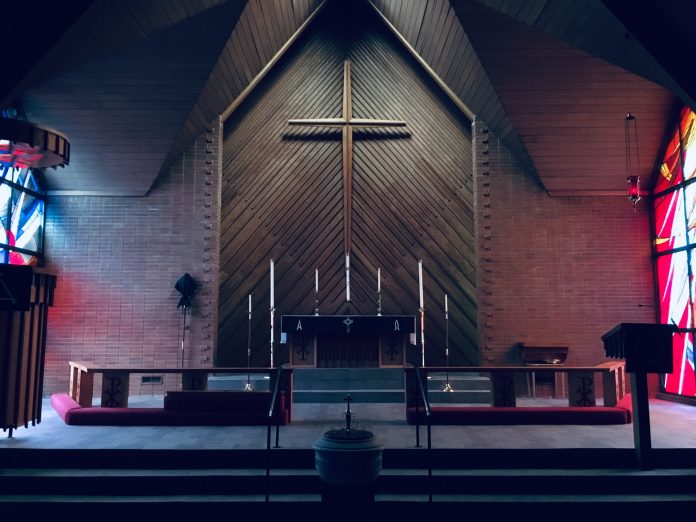I’m still surprised my team agreed to publish this…
I’ve been thinking about (okay, stewing about) some things for the last few weeks. It’s probably an indication that I’ve spent way too much time on Zoom meetings. Really. I’m in a healthy place. Emily will vouch for me…I think.
(The stuff I really want to talk about is in the second half of the article. If it were me reading this article, I’d probably just skip the first part and go there. But that’s just me.)
With that preface, here we go…
For the last 10 weeks…why does it feel like 10 years…churches have been focused on how to shift from doing church in buildings to doing church online. For an institution that’s not exactly known for radical change, it’s been a fascinating process to watch. I’m actually seeing some signs of hope. There are churches doing some good things in this season.
I’m talking with pastors and church leaders daily in the United States, Canada and the United Kingdom. I do that because pastors are the people that I’m trying to connect with and serve. That’s my mission. That’s our mission. (Side note: You might want to consider how often you connect with the people you are trying to reach.)
I’m guessing I’ve talked with leaders from more than a hundred different churches in the last 10 weeks. What I’m about ready to share isn’t representative of all churches (or even most churches). I say that because almost all of my conversations are with pastors of larger churches, though there are several folks on our team at The Unstuck Group who focus more of their time with coaching pastors of smaller churches, and they’re telling me they’re having similar conversations.
Here’s a compilation of what I’ve heard in those one-on-one conversations in recent weeks:
“It appears that more people are watching our services online than were attending our services before Covid-19.”
“We saw views of our services increase from the time we closed all the way through Easter. In recent weeks, though, the numbers have been declining.”
“We realized we needed to change how we present teaching and worship in our services for an audience who is watching from their living room. We stopped teaching to an empty auditorium and shifted to an off-site location or a studio where we can focus on speaking to the camera. That helps our teaching connect with people better in this season.”
“We are doing much shorter services because the data indicated people stopped watching the longer the services lasted.”
“Giving tanked the first couple of weeks, but came back strong after that. In fact, giving is ahead of budget now.”
“We received the PPP loan, expenses are down because our building is closed and giving is strong. We’re actually in better financial shape than we were before the crisis.”
“Almost everyone on our staff team has been redeployed to a new role. Half our team is focused on developing and delivering content for online environments. The other half of the team is focused on caring for people in our congregation. We are making personal contact primarily through phone calls with everyone in our church.”
“We have shifted our focus in recent weeks. Now we are figuring out our phased plan for reopening our church. We are planning to open by ___________ .”
See. There’s a lot of good news in those comments. By the way, we’ve shared some of what I’m learning from churches on our website.
That’s what I’m hearing in one-on-one conversations with pastors, but I’m curious to know whether or not that’s your experience as well.
With that in mind, I’d really appreciate it if you would complete this brief survey to help us better understand how churches are doing.
That, of course, will help us serve you better in the coming weeks as well.
This is the part of the article that sounds like I may have watched too much Fox News or MSNBC or both.
(But, again, I’m in a good place.)
Now that I’ve shared what I am hearing in the conversations with pastors, let me suggest some questions that I’m not hearing churches talking about much, if at all.
Here’s a hint—
The fact that I’m mentioning these topics is an indication that I think you need to be processing these with your team. Consider this free coaching.
1. What if we reopen our church and people don’t come back…for many months?
I’m hearing stories from several churches that have already reopened and attendance isn’t even 15 or 20 percent of what attendance was before Covid-19…especially in larger churches. (This isn’t surprising, if we’re honest. Remember, people have been hearing for weeks that we should wear masks, practice social distancing and avoid indoor gatherings with large groups of people.)
You’re going to have to decide if it’s worth the time and energy to comply with guidelines for in-person gatherings if few people are actually going to show up. In “normal” circumstances, I would tell you that anything that requires a lot of time and energy for something that will only engage 20% of your congregation is not a wise investment of resources.#unstuckchurchCLICK TO TWEET
2. What if people are saying they want the church to reopen, but they don’t show up?
Because that’s another story we’re hearing from churches that reopened in recent weeks. To comply with local guidelines, some churches are taking online reservations for limited seating at services. However, large percentages of people aren’t showing up after making reservations.
In the United States especially, we are very independent people. (Our friends in the U.K. and Canada think we are odd people because we aren’t “pulling together” in the face of this crisis.) We like our freedoms. We don’t like our politicians telling us what we can and can’t do…even during pandemics. We want to stick it to the man…at least by what we say on Facebook. Because of that, we want our places of worship to be open. The only problem is that what people are saying and what they’re actually doing are two different things. (Just ask any restaurant owner in your community.)
3. If most people don’t show up for a service at the building, does that mean we need to continue investing all the time and energy we have in recent weeks to engage with people online?
I hope your answer to that is YES!
The Internet’s not going to stop working all of the sudden once your governor says churches can start holding Sunday services at your building. We will still be competing with a culture that expects everything to be available online and on-demand. Because of that, you need a long-term digital strategy to reach new people and encourage those already connected to your church to take their next steps toward Christ. That was the only thing churches could do to survive during this crisis. It’s also the only way churches will survive after this crisis is behind us.CLICK TO TWEET
4. After we reopen, what is our plan when someone attends a service and we find out later that they had the coronavirus?
You might want to think about that because it happened at this church, this church, this church, this church, this church, and this church just to name a few. (Apparently, the virus doesn’t know we have the freedom to gather for worship in the United States.)
So, as you are building your phased reopening plans, you better have this plan in place as well—
- Who will coordinate with your local health departments if you find out someone at a service had the virus?
- How will you communicate that news with your congregation?
- How will you track down the people who were at the service to encourage them to get medical attention?
- How will you communicate with volunteers on serving teams after known cases surface?
- Under what circumstances will you stop in-person gatherings again?
- Have you communicated with your insurance provider to understand how/if liability coverage works in these cases?
5. If you reopen your buildings for worship services and people show up, will they like the experience and want to come back?
I think this is going to be a stretch…especially for people you are trying to reach. I’m imagining this scenario:
First you need to go make a reservation on our website. When you arrive on our campus, you’ll need to be escorted to your seat. We’ll need to get your contact information to track you down in case someone is here with the virus. You’ll need to wear this mask. You have to sit six feet apart from everyone else in this big room which will be about 20 percent full. Your kids will need to sit with you through this entire service that is designed for adults because we can’t open our kids environments at this point. When the service is over, please leave promptly and return to your cars while avoiding contact with other people.
It sounds delightful.
Again, I have to ask, is this the wisest use of your resources (time, leadership, volunteers, money, energy, etc.) during this season? Or, would the Kingdom return on investment be better if you focused on your digital ministry strategy and the long-term shifts you’ll need to make to effectively carry out your mission and vision once this crisis is behind us.
I totally understand. There are places in this big world that have very few cases and a much lower risk. For you, feel free to ignore this article…for now.
But the reality is that Covid-19 is accelerating shifts that were happening across culture well before the virus showed up. That’s going to impact businesses, education (especially universities and colleges), non-profits and churches.
Nearly 15,000 churches had taken our Unstuck Church assessment prior to this crisis. And eighty percent (80%) of those churches self-identified as being plateaued or in decline before Covid-19.
Four out of five churches are not winning when it comes to fulfilling the Great Commission.
Doesn’t that make you mad? It makes me mad. Just reopening our church buildings without addressing the underlying issues that were causing the decline will not magically lead to churches becoming healthy in the future.CLICK TO TWEET
Just reopening our church buildings for worship services without addressing the underlying issues that were causing the decline will not magically lead to churches becoming healthy in the future. That’s why I was praying this might finally be a wakeup call for the church. Now I’m beginning to think otherwise. It feels like we’re rushing back to return to normal as soon as we can.







